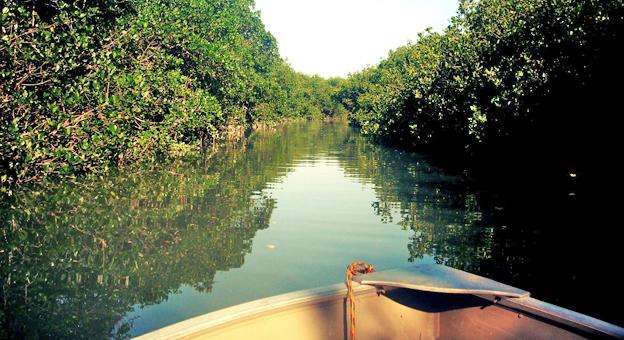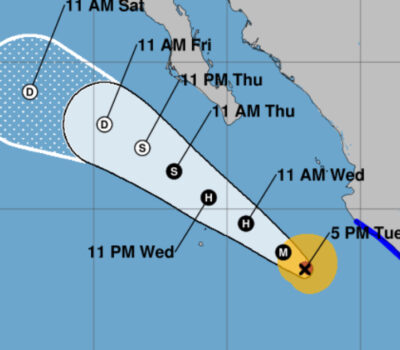El Salado is a natural oasis in the middle of Puerto Vallarta, a protected natural area where visitors coexist with crocodiles and more than 800 species of animals that roam the river and the mangroves.
The sanctuary is located in the hotel zone of Puerto Vallarta, under threat of accelerated growth of tourist developments and shopping centers around it, but with the intention of conserving and protecting exotic birds, reptiles and crustaceans, says Efe Jaime Torres, director of the estuary.
“We have shown that a site of this type can be conserved within cities,” says the biologist, noting that “there is a lot of pressure from outside.”
The estuary, a marshy area full of mangroves, has undergone invasion and predation for decades. The Government of Jalisco warned in 2013 that El Salado would lose more than 150 hectares within 50 years, due to the cultivated areas, the construction of the city’s seaport and other commercial buildings.
In 2000, 169 hectares were declared a protected area under the category of Ecological Conservation Zone. Since then, experts and volunteers work on the reproduction, conservation, monitoring and study of the 857 species of animals that live there.
“We focus on protecting a habitat,” Torres says.
Because of its proximity to the bay and its vicinity to the hills, the estuary is a place where terrestrial life and the marine life are united.
When the tide rises, marine species climb into the estuary, while when it comes down, “sweet-aquaculture species enter a little into the sea and can interact. That’s why we call this type of site an ecotone,” he explains.
A few meters from the main entrance of the estuary are behind the bustle of the tourist area and the main avenue of the city. Instead, the song of hundreds of birds welcomes this humid ecosystem that displays multiple shades of green in its trees and shrubs.
Visitors can opt for two tours to know more about the flora and fauna of the site: a trail tour or navigate through the river. In any case, it is possible to admire the hundreds of mangrove specimens up to 10 meters high that sink their thick roots into marshy water.
These trees not only provide a sense of tranquility to visitors, but also provide shade and camouflage to aquatic animals, as well as providing nesting and resting areas for birds.
Moreover, its roots help to reduce the salinity of the water and clean it of the urban and toxic waste that comes from the urban spaces around it, says the director of the site.
According to the season or the water level of the river, it is possible to see more or less species of reptiles, crustaceans and specimens of adult crocodiles, says Óscar, the a boat guide.
In the middle of the flow and between the tunnels that form the mangrove swamp, you can see some crocodile head camouflaged in the water, birds like the red egret that come to leave their nests, turtles that inhabit the place or crustaceans that then return to sea.
The estuary water is brackish, that is, it combines fresh water from the rivers around the estuary and the saltwater that comes from the sea, which is why species of both ecosystems use the site for activities such as breeding or protection from predators, explains the guide.
From stingrays, shrimp, jellyfish and even a hammerhead shark, they have reached the mouth of the estuary when the tide rises. This attracts poachers, who take advantage of the fact that there is no surveillance in the area at night to get in their nets, he says.
This ecosystem is favorable to protect crocodiles, a species that has lived there for decades, but that was gradually moved to other areas due to urban growth.
In the estuary there are five adult specimens, three females and two males, in addition to dozens of young that were born in the place.
The reptiles travel freely and peacefully in El Salado, especially in the hottest season, they are visible on the banks of the river, where tourists can admire them.
“We watch them, but as soon as the crocodile hears us, he leaves because we have not changed his behavior … and we help people to get closer, to listen, to understand a little of what the crocodiles need,” says the director.
Children can take their smallest offspring into their hands, an experience that helps strengthen the culture of caring for the environment among new generations.
Source EFE
El Salado is a natural oasis in the middle of Puerto Vallarta, a protected natural area where visitors coexist with crocodiles and more than 800 . . .












